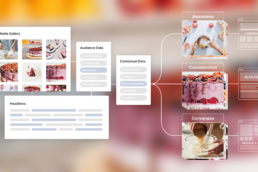A conversion funnel is one of the most powerful tools at a content marketer’s disposal. Used in conjunction with buyer personas, conversion funnels create a reliable picture of how a customer feels at each stage of the buyer’s journey. Once a brand knows how their audience feels, it is possible to create content that the audience will care about.
A brand that can provide content that is relevant and interesting to its target audience at every step of the way increases the likelihood of a successful content marketing campaign, and thus a powerful native ad campaign. It is essential that content be mapped appropriately to a conversion funnel to increase the likelihood of the consumer moving to the next step in their journey.
Buyer Personas
First, buyer personas are a crucial aspect of mapping content to a conversion funnel. Each persona will have a different journey—different needs, wants, frustrations, and demographics. Buyer personas guide what type of content will appeal to a brand’s target audience at each stage of their journey as much as a conversion funnel will.
Awareness
The potential of creating content for the widest point of the conversion funnel has only been embraced by marketers relatively recently. Historically, the only type of awareness content was “word of mouth.” However, as Internet use became ubiquitous, the magnitude of “word of mouth” changed dramatically. Consumers were able to create content that informed other potential consumers via social media, forums, and blogs. Brands now recognize it is to their advantage to create content to fit the awareness stage, and to engage customers early-on in the buyer journey.
At this stage, it is important to take into account how the target audience hears about the brand, what social networks and websites they choose, and, most importantly, what content they want. Content suitable to this step of the buyer’s journey includes videos, editorials, and blog posts. Something informative or entertaining is most likely to appeal to consumers at this point.
Consideration
At this stage, the customer is likely researching the product most likely to fit their needs. The goal of content here is to nudge the consumer into the purchasing stage, which is, of course, no small feat, making the consideration stage possibly the most important level of the conversion funnel. At this point, the consumer should be familiar with the brand, and therefore willing to spend more time on more long-form content. Consider crafting content to inform your audience in the form of videos, webinars, guides, articles, recipes, and DIY guides.
Purchase
If there was ever an appropriate time to brag, this is it. This is the stage at which the consumer (hopefully) converts by making a purchase or signing up for a service, for example. This is the time for customer testimonials, case studies, special offers, and coupons. The goal of content at this stage is to demonstrate, without a doubt, this product is exactly what the consumer has been seeking.
Mapping content to a conversion funnel leads to creating content that a brand’s target audience (AKA defined buyer persona) will really care about. When the consumer is impressed by content, it leads to positive brand awareness, conversion, and, ideally, loyalty. Although no customer’s journey is the same, a well-thought-out conversion funnel is a tool that will lead to a strong relationship between brand and consumer.
For more on this topic, read: How to Create Content that Works for Your Native Ad Campaign Goals.











